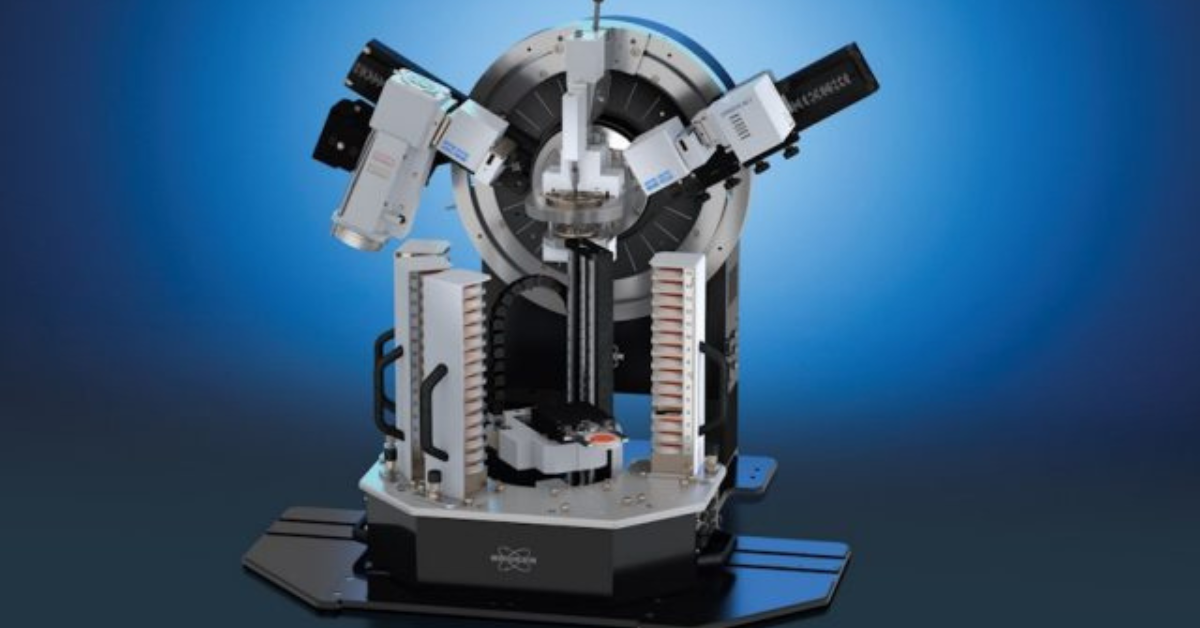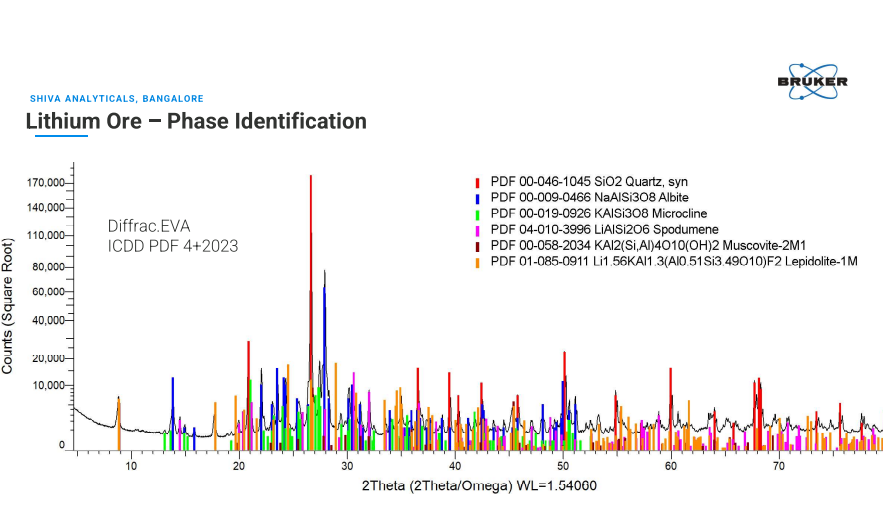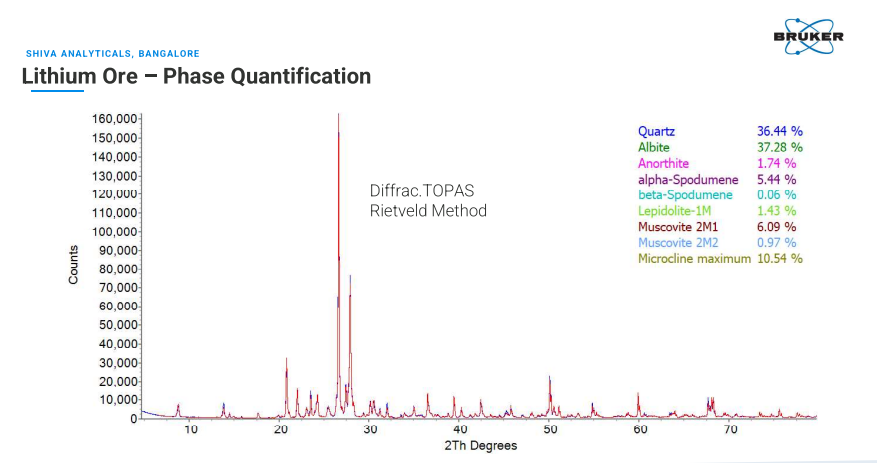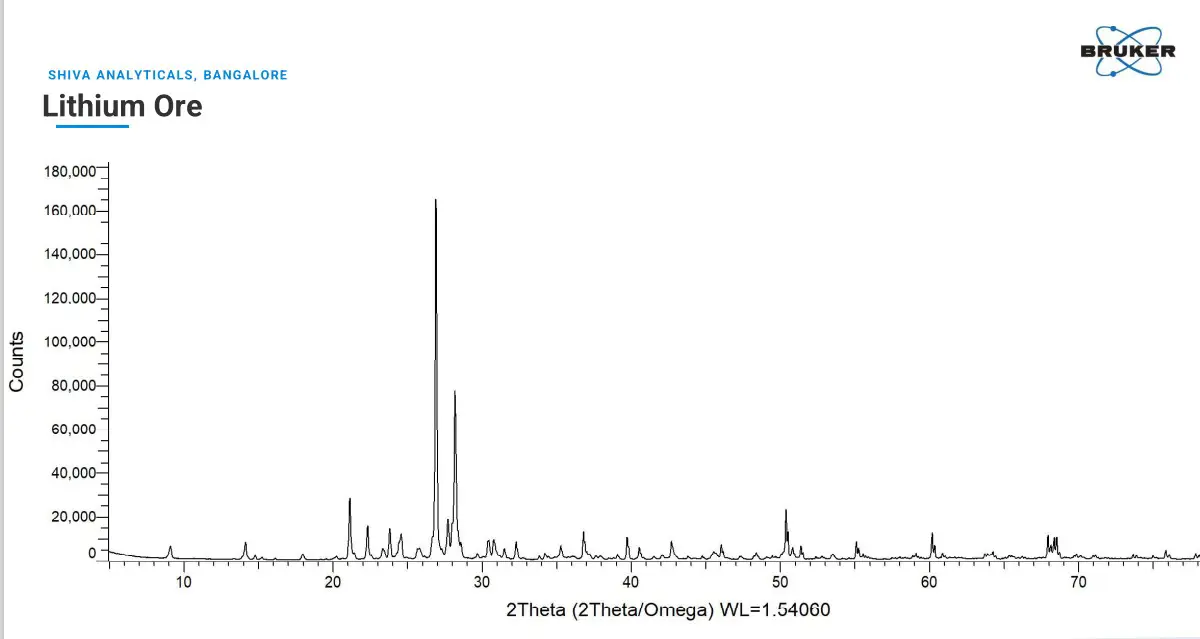X-ray Diffraction for Mineral Characterisation

XRD (X-ray Diffraction) is a widely used mineral characterization technique. XRD patterns can be utilized for a thorough understanding of the crystalline structure, size, and orientation, dislocation density, phase identification, quantification, and transformation, information about lattice parameters, residual stress, and strain, and thermal expansion coefficient. XRD mineral characterization data benefits specialists who work in the area of geochemical exploration and mineral beneficiation and metallurgy in terms of time and cost saving.
Powder X-ray diffraction data can be obtained in less than a minute and may take a few minutes to get more precise and accurate powder diffraction data. The key information from the pattern is a list of d-values with diffraction intensities. Each d-value corresponds to sets of planes, and the intensity is a measure of how many atoms are on those planes. Because different minerals have different atomic arrangements, they yield different patterns. Computers controlling powder diffractometers collect and process data automatically. They compare diffraction results with data bases to identify the mineral or metals present. The most comprehensive reference, the X-ray Powder Diffraction File (PDF) compiled by the International Centre for Diffraction Data, is available in computerized databases and contains information on almost 10,000 minerals and tens of thousands of other inorganic and organic crystalline compounds.
Shiva Analyticals provides one stop solution to identify the complete chemical composition of geological exploration samples of Ores & Minerals, in process samples, by-products of mineral beneficiation, ore concentrates, slags and finished goods and vendor products. By using specific/selective instrumental methods coupled with classical Wet Chemistry Methodology of sample preparation and dissolution like Lead Fire Assay and Nickle Sulphide Fire Assay for gold and precious metals followed by Flame/Graphite Furnace Atomic Absorption (AA) techniques; various combinations of multiple acid digestions, peroxide/carbonate/lithium borate fusions followed by Inductively Coupled Plasma-Optical Emission Spectrometry (ICP-OES) & Inductively Coupled Plasma-Mass Spectrometry (ICP-MS) techniques for determination of about 5 dozen base metals in a single or multiple combinations of the methods; lithium metaboate fusion bead sample preparation followed by an X-ray Fluorescence technique used for the major oxide analysis.



To learn more about X Ray diffraction for mineral characterization or to book an analysis please contact us.
Latest News

08.04.2025
Innovation and Precision: How Complex Diagnostics Are Transforming Plant Health in the Field
Harnessing Technology for Smarter, More Sustainable Crop Protection.

03.04.2025
Cotecna COO Romain PETIT’s Visit to China
From March 24 to April 1, 2025, Cotecna Group Chief Operating Officer Romain PETIT visited China for a week-long trip.

